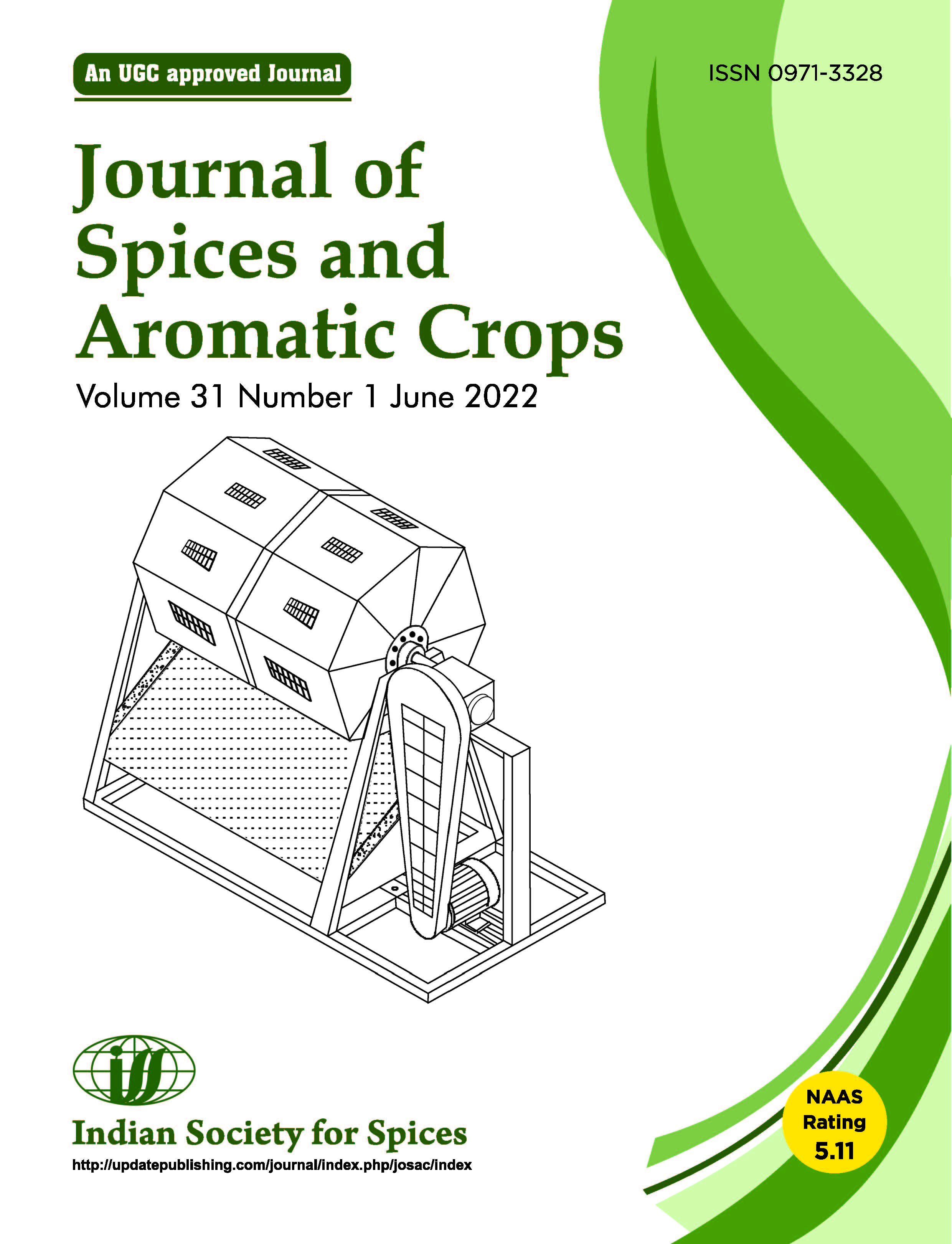Multiplex PCR assay for simultaneous detection of Phytophthora, Pythium and Fusarium associated with foot rot and yellowing diseases of black pepper
Multiple PCR for the detection of pathogens infecting black pepper
DOI:
https://doi.org/10.25081/josac.2022.v31.i1.7739Keywords:
black pepper, detection, Foot rot, multiplex PCR, yellowingAbstract
In this study, a multiplex PCR assay was developed to detect Phytophthora, Pythium and Fusarium infecting black pepper. Genus-specific primers were designed from the conserved region of ITS and a multiplex PCR was optimized by manipulating the annealing temperature and primer as well as MgCl2 concentrations. The black pepper 18S rRNA gene-specific primers were also included in the multiplex PCR assay as internal control. The assay successfully detected the pathogens from artificially inoculated black pepper roots and did not show any cross amplification with other fungal pathogens of black pepper such as Rhizoctonia solani, Sclerotium rolfsii and Colletotrichum sp. Hence, the developed multiplex PCR assay will help in early diagnosis of the cause of black pepper yellowing leading to timely adoption of management strategies.
Downloads
References
Aravind R, Kumar A, Dinu A & Eapen S J 2011 Single tube duplex PCR for simultaneous detection of Phytophthora capsici and Radopholus similis infecting black pepper (Piper nigrum). Indian Phytopath. 64(4): 353–357.
Costa S S, Moreira G M & Pfenning L H 2017 Development of a PCR protocol for the identification and detection of Fusarium solani f. sp. piperis from soil and roots of black pepper (Piper nigrum). Trop. plant pathol. 42(1): 55–59.
Jeevalatha A, Biju C N & Bhai R S 2021 Ypt1 gene-based recombinase polymerase amplification assay for Phytophthora capsici and P. tropicalis detection in black pepper. Eur. J. Plant Pathol. 159(4): 863–875.
Pandian R T P, Bhat A I, Biju C N & Sasi S 2018 Development of diagnostic assays for rapid and sensitive detection of Phytophthora infecting major spices and plantation crops. J. Spices Arom Crops. 27(2): 119–130.
Sheji C, Renu S G, Balaji S & Anandaraj M 2009 Ribosomal DNA analysis of three Phytophthora species occurring in India. Indian Phytopathol. 62(2): 155–162.
Silvar C, Duncan J M, Cooke D E L, Williams N A, Díaz J & Merino F 2005 Development of specific PCR primers for identification and detection of Phytophthora capsici Leon. Eur. J. Plant Pathol. 112: 43–52.
Subila K P & Bhai R S 2020 Pythium deliense, a pathogen causing yellowing and wilt of black pepper in India. New Dis. Rep. 42: 6.
Published
How to Cite
Issue
Section
Copyright (c) 2022 A Jeevalatha, Fathimath Zumaila, C N Biju, Mohammed Faisal Peeran

This work is licensed under a Creative Commons Attribution-NonCommercial-NoDerivatives 4.0 International License.






 .
.